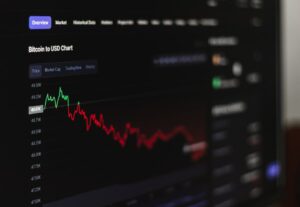Forex.com Trading: Understanding the Basics of Currency Trading
Forex trading, also known as foreign exchange trading or currency trading, is a decentralized global market where the world’s currencies are traded. With a daily trading volume of over $6 trillion, it is the largest and most liquid market in the world. Forex trading allows individuals, businesses, and financial institutions to buy and sell currencies with the aim of making a profit from the fluctuations in exchange rates.
Understanding the basics of currency trading is essential for anyone interested in entering the forex market. In this article, we will explore the key concepts and principles of forex trading to provide you with a solid foundation in this exciting and potentially lucrative field.
1. What is Forex Trading?
Forex trading involves the simultaneous buying of one currency and selling of another. Currencies are always traded in pairs, such as EUR/USD (Euro/US Dollar) or GBP/JPY (British Pound/Japanese Yen). The first currency in the pair is called the base currency, while the second currency is known as the quote currency. The exchange rate indicates how much of the quote currency is needed to buy one unit of the base currency.
2. Market Participants
Various participants contribute to the forex market, including individual traders, corporations, banks, central banks, and hedge funds. These participants engage in currency trading for different reasons. For instance, companies may trade currencies to facilitate international commerce, while speculators aim to profit from short-term price movements.
3. Market Hours
Unlike traditional stock markets, the forex market operates 24 hours a day, five days a week. This is because the market is global, with trading centers in different time zones around the world. As a result, forex traders can react to news and events that occur outside regular market hours.
4. Leverage and Margin
Forex trading offers the opportunity to trade on margin, which means you can control a larger position with a relatively small amount of capital. Brokers provide leverage, allowing traders to magnify their potential profits. However, it’s important to note that leverage can also amplify losses, so it must be used with caution.
5. Pips and Lots
In forex trading, price movements are measured in pips, which stands for “percentage in point.” A pip is the smallest unit of price change in a currency pair. For most major currency pairs, one pip is equal to 0.0001. The size of a trade is measured in lots, with a standard lot representing 100,000 units of the base currency.
6. Fundamental and Technical Analysis
To make informed trading decisions, forex traders rely on two main types of analysis: fundamental analysis and technical analysis. Fundamental analysis involves examining economic indicators, such as GDP growth, inflation rates, and interest rates, to determine the intrinsic value of a currency. Technical analysis, on the other hand, involves using charts and patterns to identify trends and predict future price movements.
7. Risk Management
Risk management is a crucial aspect of forex trading. Traders should have a clear understanding of their risk tolerance and use appropriate risk management tools, such as stop-loss orders, to limit potential losses. It is also important to diversify your trading portfolio and avoid risking too much capital on a single trade.
8. Forex Trading Strategies
There are various trading strategies used in forex trading, including trend following, range trading, breakout trading, and carry trading. Each strategy has its own set of rules and techniques, and traders should choose a strategy that aligns with their trading style and goals.
9. Demo Trading and Education
Before diving into live trading, it is highly recommended to practice with a demo trading account. A demo account allows you to trade with virtual money in real market conditions, helping you gain experience and test your trading strategies without risking real capital. Additionally, there are numerous educational resources available, including online courses, webinars, and forums, that can provide valuable insights and guidance for aspiring forex traders.
In conclusion, forex trading is a complex but potentially rewarding endeavor. Understanding the basics of currency trading is essential for anyone looking to enter this market. By familiarizing yourself with key concepts such as currency pairs, market participants, leverage, and risk management, you can lay a solid foundation for your forex trading journey. Remember to continuously educate yourself, practice with a demo account, and develop a robust trading strategy to increase your chances of success in the forex market.





